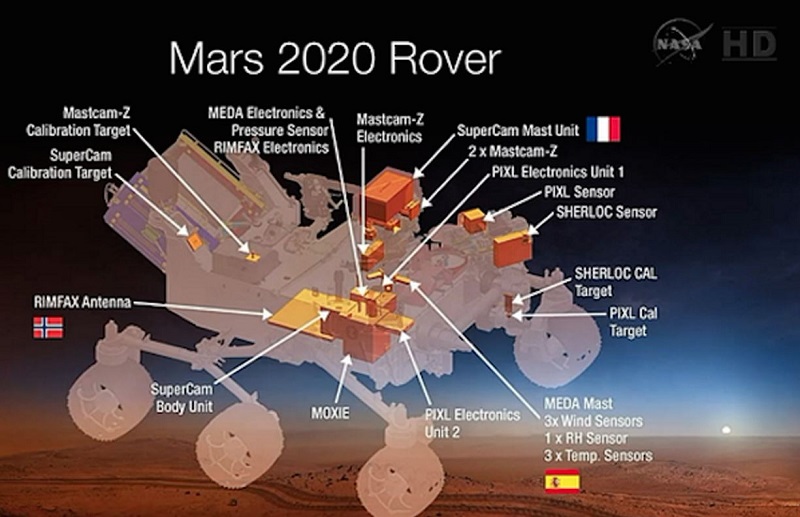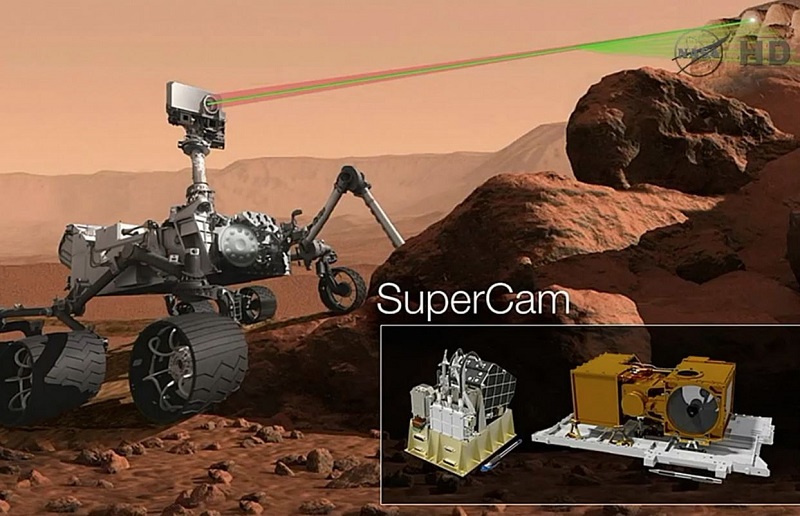
A new Mars rover is scheduled to rendezvous with the red planet in 2020 as part of a series of missions un-climatically called Mars 2020. The 2020 Mars rover is a better equipped twin of the Curiosity rover currently stationed on Mars; but instead of carrying its twin’s advanced gadgetry, the new rover packs far more state-of-the-art tech including X-ray vision, a “SuperCam” rainbow laser, an Oxygen maker, and more.

SuperCam
The SuperCam laser is a more advanced version of the rock composition scanning laser onboard Curiosity. While both lasers are capable of incinerating chunks of rock to determine the chemical makeup, SuperCam has the ability to study the vapor residue in the visible and infrared spectrum. The laser can detect rocks’ composition from up to 40 feet away, including whether or not they contain traces of organic compounds.
Ground-penetrating radar
The Radar Imager for Mars’ Subsurface Exploration (RIMFAX) ground-penetrating radar will search scan up to a third of a mile beneath the Martian surface in search of groundwater and other unique geological features. RIMFAX provides up to a centimeter-scale resolution.
X-ray vision
The Planetary Instrument for X-ray Lithochemistry (PIXL) is an X-ray fluorescent spectrometer responsible for mapping out the elemental makeup of rock samples. By determining which rocks house elements most suited for microbes, scientists could get a better idea of which locations are most likely to hold evidence of life.
Oxygen maker
The Mars Oxygen ISRU Experiment (MOXIE) is an instrument that uses electricity to extract oxygen from the carbon dioxide enriched Martian atmosphere and produce breathable air. Testing this instrument is crucial in paving the way for future manned missions to Mars. If the device can successfully produce 20 grams of oxygen for 50 hours, consider the implications of what an upscaled version can do; it may be able to produce the sufficient amount oxygen needed to ignite a rocket that will bring Martian explorers back home to Earth. “By the time the crew gets there,” said MOXIE supervisor Michael Hecht, “the oxygen tank will be full and ready to take them home.”
Organic molecule hunter
Last but not least is the Scanning Habitable Environments with Raman & Luminescence for Organics and Chemicals, an instrument rightfully abbreviated as SHERLOC. SHERLOC’s job of looking for organic molecule traces is complimented by the PIXL’s X-ray capabilities.
The Mars 2020 rover will attempt to perform something vastly different than Curiosity or Opportunity: a sample return mission from Mars. Remotely scanning and recording data is one thing, but returning a sample back home to Earth has been long coveted since the days of the Apollo missions. To aid in this endeavor, the rover shed half the weight equivalent of the Curiosity and replaced it with storage space for up to 30 samples. How exactly NASA will execute the return has not yet been determined.
Via PopularScience/Wired
Advertisement
Learn more about Electronic Products Magazine





